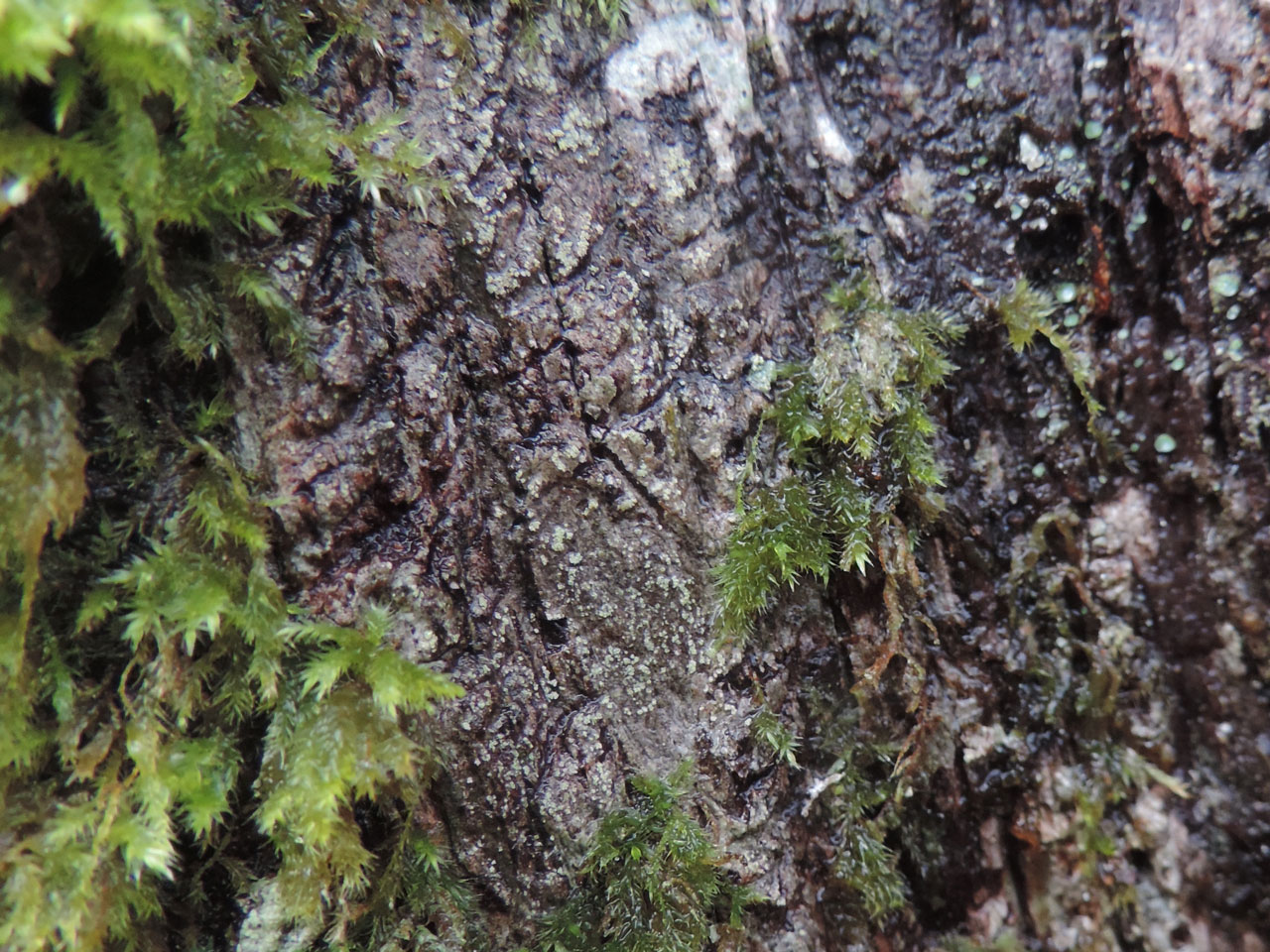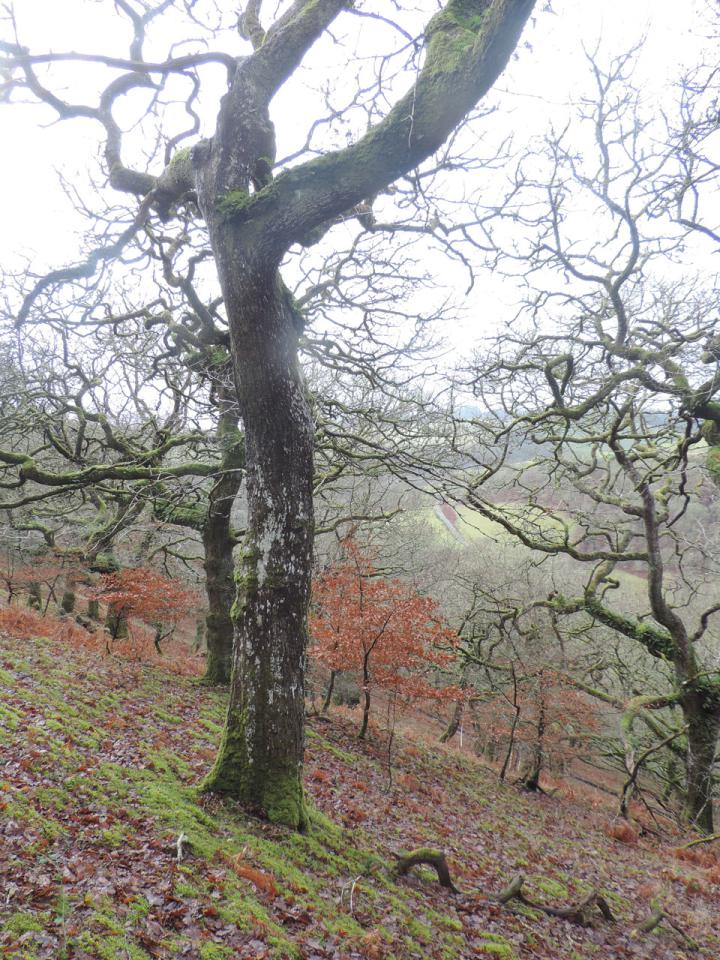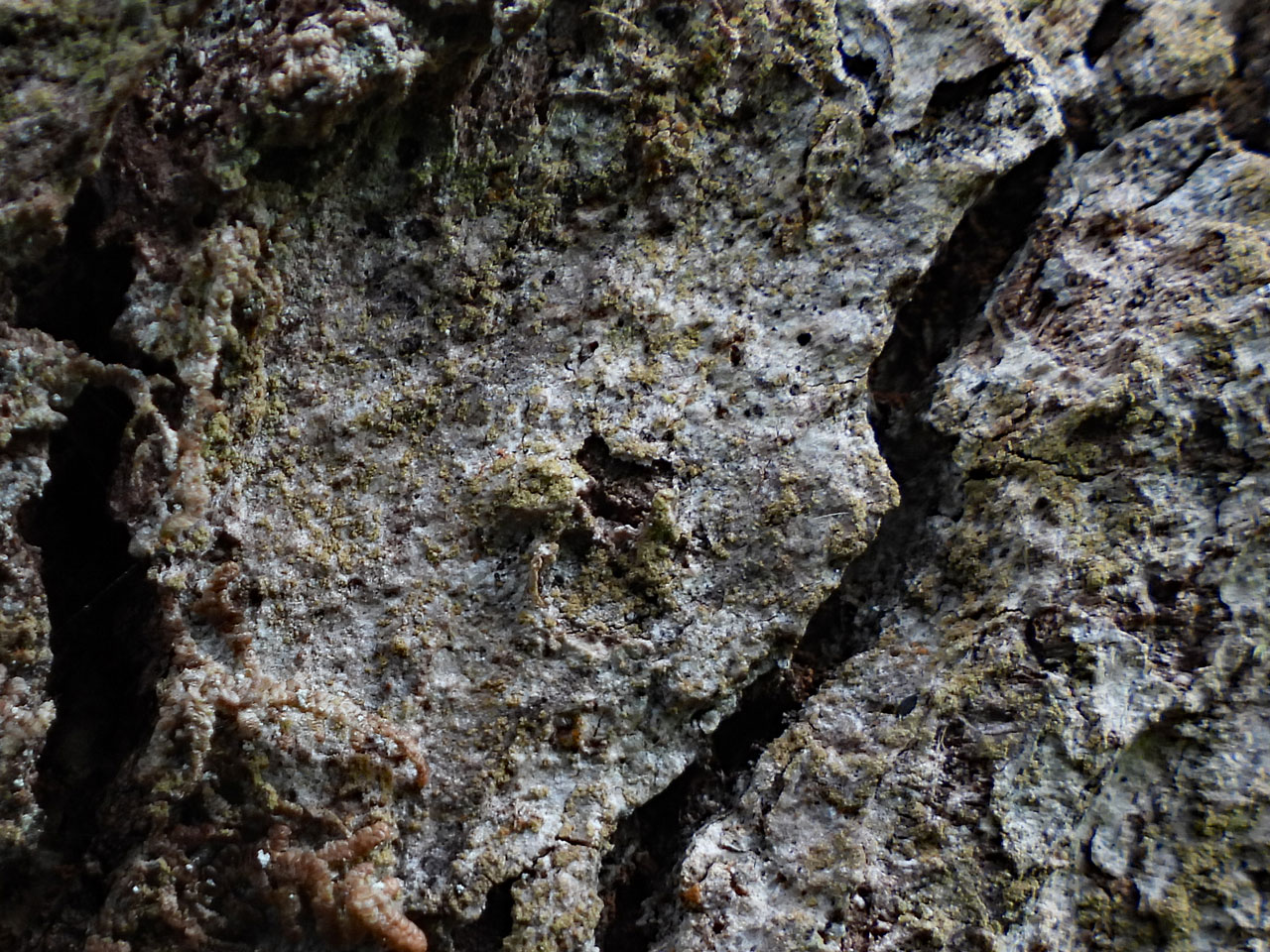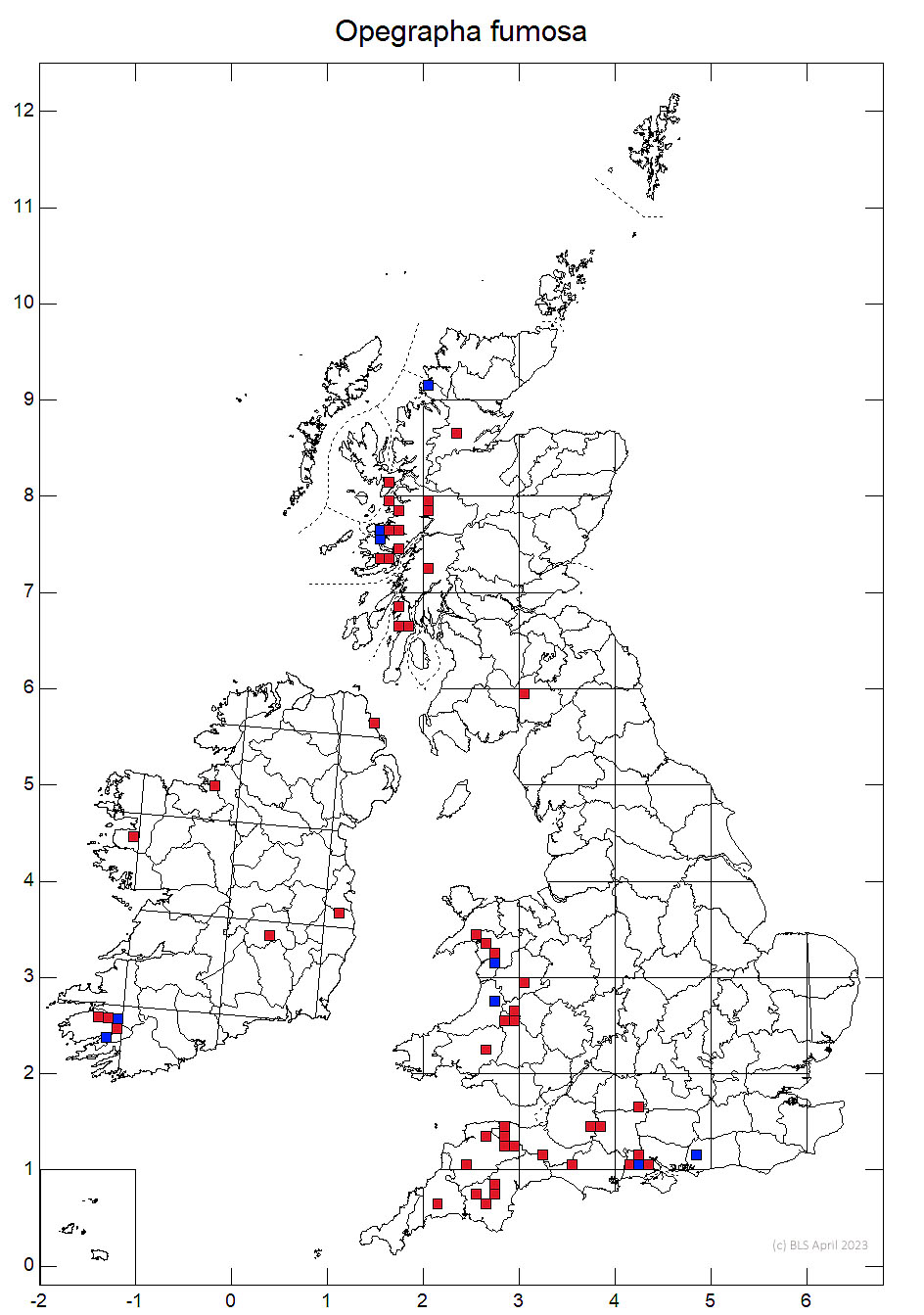Opegrapha fumosa
A very inconspicuous lichen, which takes practice to spot, consisting of a thin bark coloured thallus with small fleck like pale fawn soralia. It is affectionately known as “Smoky Joe” from its illusive nature and colour. Only the fleeting C+ red spot test is distinctive. Found in sheltered locations deep in oceanic woodlands on acidic bark.
Thallus thin, wide-spreading, effuse, immersed, inconspicuous, grey-brown; soralia numerous, pale fawn, minutely mottled brown (never orange even when fresh), sometimes erumpent-punctiform or elliptical, 0.2–1 × 0.2–0.6 mm, flat or regularly convex with loosely heaped soredia, often confluent and diffuse but never forming a continuous leprose crust; soredia finely granular, 20–50 μm diam., pale fawn, those on the surface often brown. Apothecia and pycnidia unknown. Soralia C+ red, K–, KC+ pink, Pd–, UV– (gyrophoric acid).
Forming extensive patches, sometimes to several square metres, characterised by diffuse, grey-brown stains with inconspicuous, punctiform to erose, fawn-coloured, C+ red (fleeting) soralia.
This sterile lichen is probably not an Opegrapha and its actual relationships are under investigation.
On trunks of mature Quercus and more rarely Ilex, Fagus and Fraxinus in sheltered sites in ancient woodland and parkland.

Rare and localised. W. Scotland, Ireland, C. & N. Wales, S. England (Cornwall to Hampshire, New Forest).
Grows deep in sheltered woodlands and is vulnerable to over shading if expensive grazing is removed from traditionally grazed woods.
Britain: Notable
Wales: Vulnerable
Scotland: Priority Taxon for Biodiversity in Scotland
Cannon, P., Coppins, B., Ertz, D., Fletcher, A., Pentecost, A. & Simkin, J. (2021). Arthoniales: Opegraphaceae, including the genera Llimonaea, Opegrapha, Paralecanographa and Sparria. Revisions of British and Irish Lichens 13: 1-19. Link
Text by Neil A Sanderson based on Cannon et al (2021)



